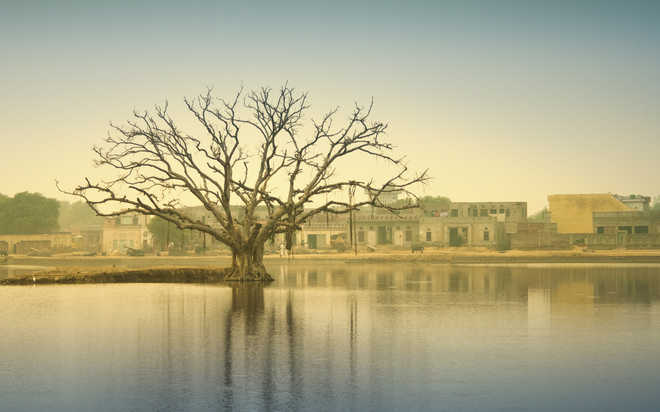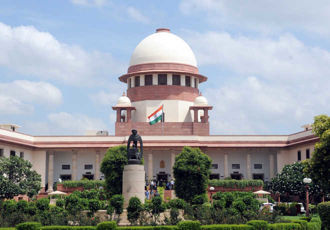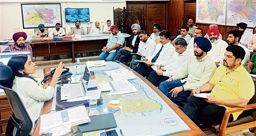
iStock
Sandhya Prabhat
RAINS are finally here, but across the last few days, heart-wrenching pictures of women and children fetching water for daily chores from miles away and urban men and women lined up with empty buckets have been splashed all over the newspapers and social media. What is alarming is the fact that the situation has become an annual feature in the past few years. These stories of struggle have, understandbly, generated stories on why urgent action is required and the sustainable solutions and the way forward.
Way forward lies in past
The one way ‘forward’ that everyone unanimously agrees upon is by going back — and look for solutions in our tradition of water conservation and sustainable use, in the culture of ponds and lakes and in the wisdom associated with the traditional communities. Reviving our dying ponds and lakes, constructing new ones, raising ground water level and strengthening the old system in its totality is at the core of the solution.
Those wanting to move forward in this direction get inspiration from the words and actions of late Anupam Mishra. The environmentalist, journalist, photographer and author of several books on this subject, his greatest work, which is copyright free, remains Aaj Bhi Khare Hain Talab (The Ponds are Still Relevant). This seminal work has remained a source of knowledge and inspiration behind the creation and rejuvenation of more than 40,000 water bodies across India.
The book is a result of Mishra’s quest to understand traditional water harvesting systems that led him to travel extensively for three decades in different parts of the country. The book, accompanied by beautiful illustrations, is written in a simple eloquent language. It describes the traditional methods that communities have developed over the centuries to conserve water with full richness of the language developed around it.
The first edition of the book was published 26 years ago by Gandhi Peace Foundation. Since then, Gandhi Pratishthan has published five editions. The work has been cited by several newspapers, periodicals, institutions, movements and governments. It has been translated into 19 languages, including Punjabi. More than 2 lakh copies have been published so far.
Throughout his life, Mishra, who passed away in December 2016, spoke up in support of decentralised water storage systems. He informed the world about the effectiveness and elegance of the traditional systems of baolis (stepwells), khuis (wells with small diameters), johads (tanks that are fed by earthen check dams) and chaals (small water body along a slope) that can help communities in the face of drought. He inspired thousands to take charge of these systems to become water-sufficient communities.
At a time when a large part of India is facing acute water shortage, the shortcomings of treating water just as a commodity have been realised very well. The need is to reclaim the wisdom of our lost water-harvesting systems and Aaj Bhi Khare Hain Talab stands as torchbearer.
The bond with ponds
Mishra had highlighted several stories in the book explaining the history of ponds and their bond with societies. He said that sometimes a pond was built as a prize and sometimes it was given as a reward. Whosoever built a pond in the boundaries of good kings was exempted from the revenue of land lying below it. This practice was prevalent particularly in Sambalpur, Odisha.
Pond building has been a part of penal code also. In Bundelkhand, Madhya Pradesh, the caste panchayats would often penalise people, if found guilty of unpardonable offences, by ordering them to build a pond. This tradition is still prevalent in Rajasthan. In Gopalpura, a small hamlet in Alwar district, a violator of a panchayat decision is made to deposit a specific amount by way of penalty in the gram kosh i.e. common fund.
Buried treasure
There has been a tradition of spending the buried treasure if someone finds it, not for personal gains but for altruistic pursuits. And this altruism normally meant building ponds or repairing these. According to folklore, Jagatraj, son of Bundelkhand’s ruler Chhattarsal, came to know about a hidden treasure from an informer. Following the clue, Jagatraj got the treasure. The enraged king asked his son, “Why did you dig out the dead, buried the Chandel treasure? Now that it had been unearthed, it must be put to the best use.” So he ordered the son to get repaired all ponds made by the Chandels and construct new ponds also. Records show that from 276 to 1162 Vikrami year, 22 big ponds were built in the name of 22 generations. Many of these exist in Bundelkhand even today.
Community work
Mishra wrote that the concept of community work was not restricted to spending treasures for public good. There were many other such practices. Amavas (moonless night) and Poornima (full moon night) were considered auspicious for doing things of common interest. There was a tradition of withdrawing from the personal chores and engaging oneself in public works during these two days. These days were utilised for repairing and maintaining the local pond.
Not just money, labour was also invested for public good. Of 12 Poornimas in the year, 11 were reserved for labour. Besides, there was also a tradition of collecting foodgrains or money for pond work on the Poornima of Pausha (10th month of Hindu calendar, corresponding with December/January). In Chhattisgarh, Chher festival is celebrated on that day. The people come in groups and visit every doorstep while singing. They collect foodgrains from the householders as the paddy crop has just been harvested.
Everyone contributes according to his/her capacity. The foodgrains thus collected are deposited in the gram kosh. Funds generated are then used for the repair or any other new works done on the ponds or other public places.
People can contribute their labour or capital towards the construction/maintenance of public ponds. Public participation was considered necessary even for maintenance of private ponds back then.
Clods of inclusivity
The practice of bringing soil from all public places and putting it into the pond on its completion is prevalent even today. In Chhattisgarh, after the construction of ponds was completed, soil was brought from horse stable, elephant stable, market place, temple, cremation-ground, brothel, wrestling arenas, schools etc. and was added to the pond.
Of birth, christenings and marriage
The ponds have life. The infusing of life in a pond was celebrated as a festival. It was christened as well. At some places one can find complete details about a pond inscribed on a pillar or a copper plate.
At some places, there was a custom of conducting the marriage of a pond with full ceremonial grandeur. This tradition is still prevalent in Chhattisgarh. The pond cannot be used before wedding. Nobody will draw water from the pond nor will cross it over. The people of the village gather on the chaupal on this occasion. Soil from the nearby temples is brought. Water of River Ganga i.e. Gangajal is also brought. It is mixed with water from other five to seven wells or ponds, and poured into the pond.The wedding then is solemnised. Sometimes, the pond-builders also arrange for dowry according to their capacity.
A pillar is fixed near the pond to commemorate the wedding festivities. During later years, when the pond is cleaned or desilted, there is a custom of installing a pillar to remember this event as well.
Secret of the longevity
In Chhattisgarhi dialect there is a idiom that says a big village should have at least 126 ponds. And the locals have done well to abide by it. Even after nearly a thousand years, we can count more than hundred ponds at Rattanpur (10th to 12th century), Kharaudi (seventh to 12th century), Aarang and in Kubara of Raipur and Deepadih of Sarguja district.
There was only one secret of the longevity of these ponds i.e. the sense of belonging among their beneficiaries. In light of such a passionate bonding, the words like maintenance pale into insignificance. The folksongs like Bhujaalia ke haathon ang pani mein doob saken, itna pani taal mein rakhna' (Keep this much quantity of water in the pond as may conceal the body) reflect the village belles longing and prayers that ponds should remain full.
Gazdhars: The unsung heroes
A major contribution of Mishra’s work was giving recognition to the heroes engaged in pond making. Hundreds and thousands of ponds, after all, could not spring from thin air. These anonymous indigenous ‘engineers’ were big names in their own times. The ponds used to be built all over the country and the builders, too, fanned out all over the country. Sometimes, the pond builders were found concentrated at a particular place and sometimes they used to do these jobs by travelling all over. Gazdhar is a beautiful word to remember the pond builders with deference. This word still exists in some parts of Rajasthan.
Gazdhar means the one who wields the gaz i.e. literal yardstick. Gazdhars were architects and engineers. They would build, rebuild and maintain. From town planning to the meanest construction works, they would build everything. They formulated plans, worked out the cost of entire project and managed the necessary material for the same. And, in lieu of all this, they never demanded any thing from their client that he might not be able to give. The people, too, were generous enough to give them whatever maximum they could afford.
Skills rewarded
After completion of work, the gazdhar was bestowed with honours along with the remuneration. Offering a robe of honour, called siropa in common parlance, has been preserved by the Sikhs only. Until recently, however, the tradition of honouring with a siropa has been in vogue in Rajasthan. Beside adorning a pagri (turban) on gazdhar's head, buttons of silver and gold were also gifted. Land, too, was registered in his name. After wearing the turban, the gazdhar would name some of his associates who, too, were given something as gift alongwith the remuneration. This sense of gratitude was reflected during the community meal as well after the work of pond-building was completed.
A community named silaavata has also earned great accolades for its dexterity. The word silaavata owes its origin to shila i.e. stone. The silaavatas,too, were in larger numbers like gazdhars. Even today, one can find silaavat paras in the old cities of Rajasthan. Silaavatas have a full-fledged mohalla at Karachi in the Sindh area. After Partition, Hakim Mohammad, a silaavata, even was made a minister berth in Pakistan's cabinet.
People of similar skills had various names. Those who could tell the exact location of underground water were mystics known as sirbhavas. There were jalsoonghas, who could identify the existence of underground water just by smelling, just like sirbhavas. However, the former indicated their finding with the help of a twig of a mango or jamun tree. This style is in vogue even today. Many tubewell companies first select the site mechanically and then call these jalsoonghas to confirm the availability of water at that particular spot. The public sector also avails of their services but without putting their contribution on record.
If only we valued traditional wisdom as Mishra did, we may not have been in dire straits as we are today.
























